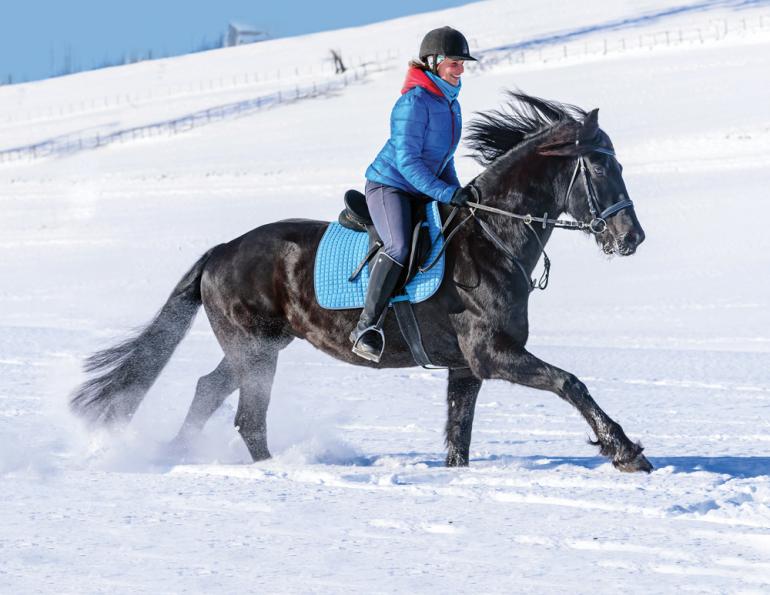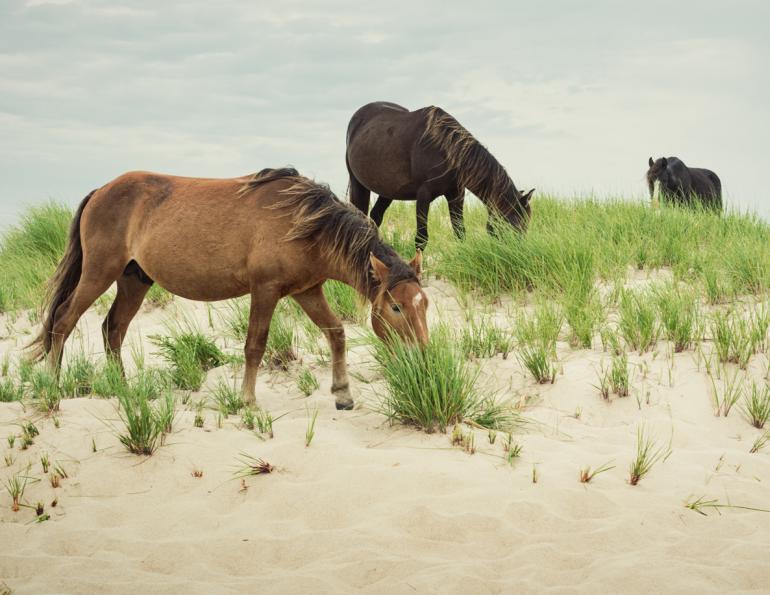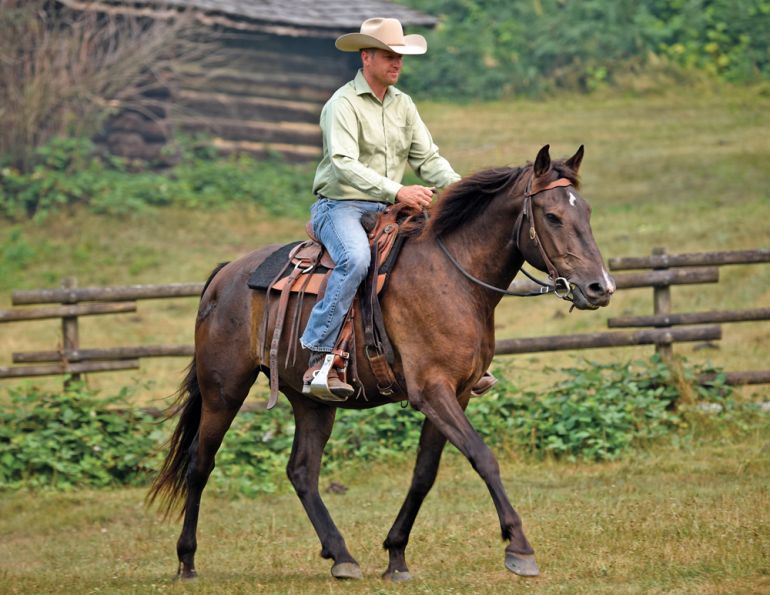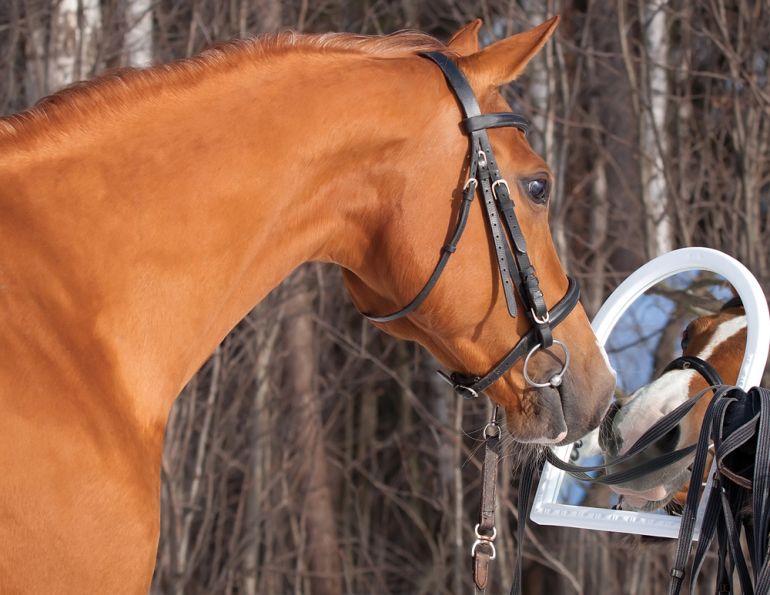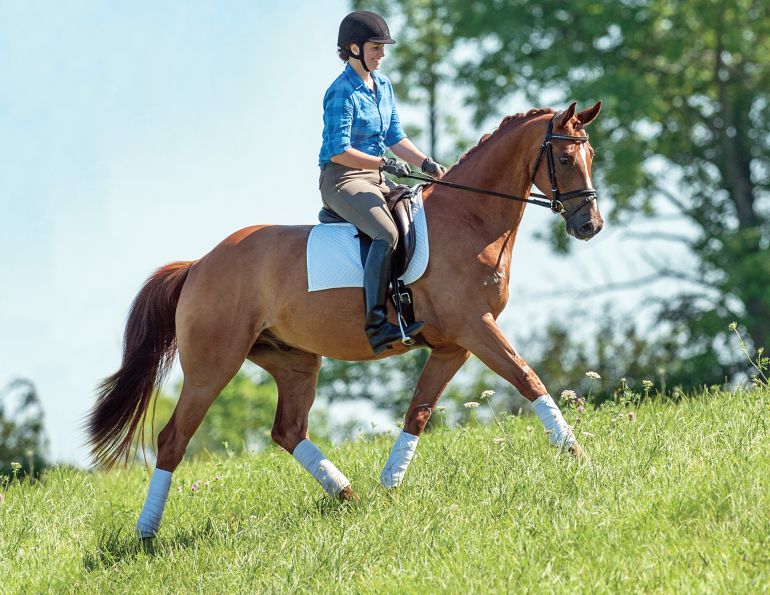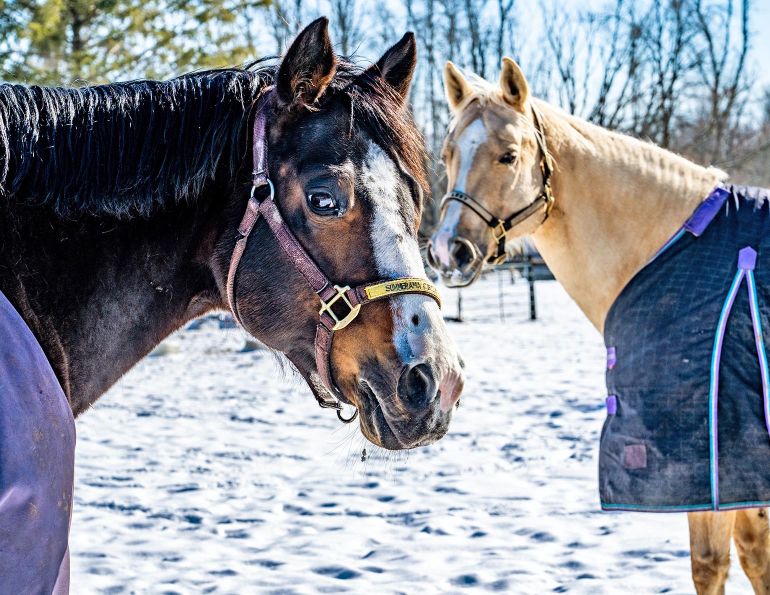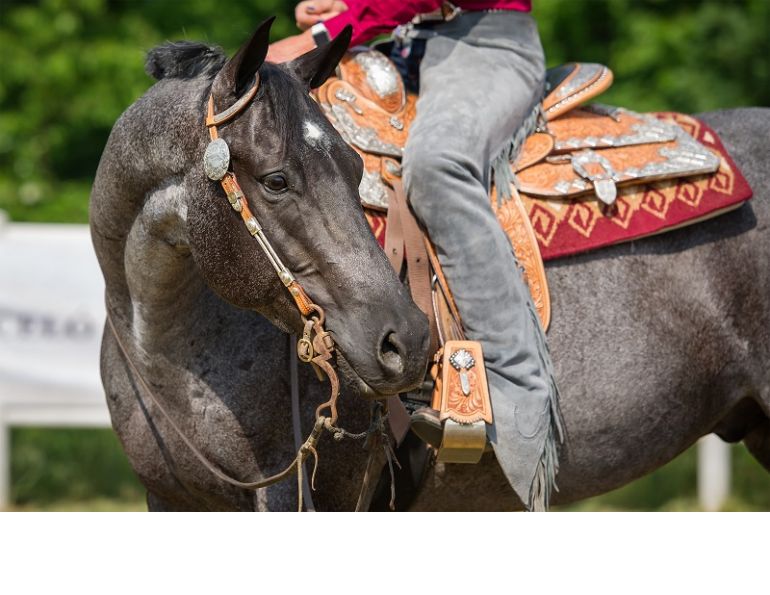Rules by Which to Canter
By Jec A. Ballou
When it comes to cantering, riders seem to divide in two camps. In one camp are those who favour it above all else, while the other camp includes those who find it scary or unpleasant. I would like to add a third camp: riders who understand the unparalleled physiological benefits of cantering their horses. Beyond the obvious cardiovascular conditioning, cantering can improve muscle tone, symmetry, and flexibility more than other gaits. Let me explain this further, in addition to offering some tips and guidelines.
Many arena riders like myself were taught to fully master our horses’ balance and performance at trot before tackling canter. In reality, it can take such a long time to master good trot performance that the canter suffers repeated postponement, sometimes for a couple of years or more. And without daily bouts of cantering, we are lacking one of the best tools to help a horse use his body optimally. I have heard vets, massage therapists, and skilled trainers recommend cantering to improve a horse’s body mechanics, whether or not it is perfectly executed.
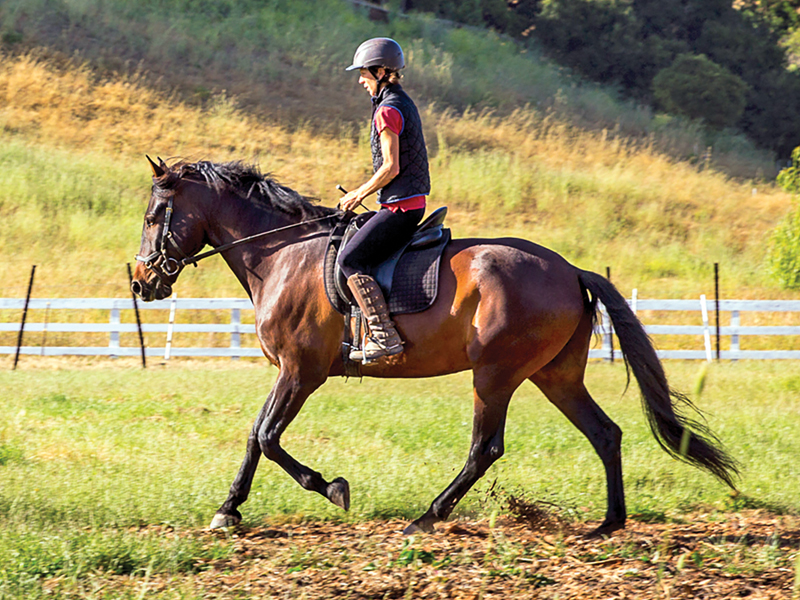
Cantering benefits the horse by helping them relax their trunk muscles and breathe deeply, which delivers more oxygen to their muscles. Photo courtesy of Jec Ballou
During canter, the horse swings his hind limbs forward by lumbosacral flexion as opposed to hip flexion, which is the primary hinge point for trotting. This repeated cycle of flexion and extension of the lumbosacral junction stimulates the horse’s lower back, while also maximally extending the gluteal muscle, a common source of tension and rigid postural habits. As wave-like motions of each stride activate this area, the horse releases restriction from his back and topline muscle chain.
This explains why most horses feel smoother and more comfortable to ride after a bout of cantering. Further, during canter the horse’s respiration cycle syncs to the rhythm of his strides through a process called entrainment. On the downbeat of each stride, his piston-like diaphragm shoves forward against the chest wall, causing exhalation. The quicker he canters, the more rapidly he needs to take in air.
This is an important way to help young, tense, or stiff horses relax their trunk muscles and breathe deeply, allowing them to round their topline. Many horses hold their breath, or they breathe shallowly and keep the muscles of their ribcages clamped, especially during trot when the spine mostly serves the role of a rigid balancing rod rather than a conduit for wave-like pulsations. Cantering helps break the habit of shallow, or holding, breaths.
Not only is deep, rhythmic breathing essential for mental relaxation of an equine athlete, it determines muscular effort. Improved delivery of oxygen to muscles allows for more forceful contractions. Lack of variability of muscular force is a common reason for horses and riders hitting a plateau in their training.
Related: The Comfy Canter
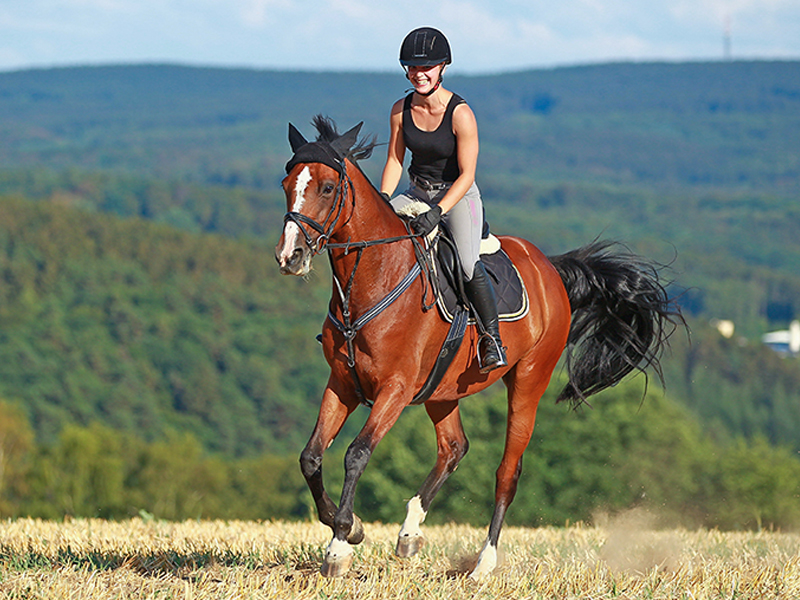
"A canter is a cure for every evil." — Benjamin Disraeli - Photo: Rolf Dannenberg
Of course, all of these good outcomes depend on some rules. What follows are the top tips for canter work that benefits your horse.
First of all, longeing does count towards the physical benefits your horse can reap from cantering. Riders who are timid about cantering often ask me whether they can still meet their horses’ needs if they do the work unmounted instead. While it is not an exact replacement for the value of riding, groundwork is absolutely better than missing out on cantering altogether, so go ahead and incorporate it from the ground at least twice per week for three to five minutes each time.
If you plan to tackle your young or unbalanced horse’s canter from the saddle instead, allow yourself to ride with a light seat. Keeping your weight off the horse’s back at this point generally allows him to relax quicker. Trying to push oneself deep in the saddle, or striving for attractive equitation on an unbalanced cantering horse, will cause him to tighten his back muscles, resulting in speed and stiffness. Instead, lift your seat slightly out of the saddle to unburden the horse’s back until the gait develops a steadier rhythm.
Another valuable option is to find a rider to help you once or more per week. This person does not necessarily have to be a trainer; often a young rider or friend will happily climb aboard your horse for a good canter regularly. Some riders struggle to swallow their pride, hoping to do all their horse’s training themselves. But if you are missing out on canter because of your own discomfort or anxiety, do your horse a favour and reach out for some help. As the balance and quality of his canter improves from someone else riding him, you will be more apt to give it a go yourself.
A daily tip I give riders is to pay attention to ratios of time spent in each gait. At the end of your session, ask yourself how many minutes you spent walking versus trotting versus cantering. Make a goal to get those ratios nearly equal a couple of days per week.
When beginning canter work, it can be very useful to give yourself permission to work on just one lead at a time. Often a horse will have one lead that is much more balanced. In fact, he might only wish to canter on that lead and have quite a bit of balkiness about the other one. It is no use adding to his anxiety by making a big issue about his less preferred lead. Progress will happen faster if you spend a couple of weeks making positive headway on the lead he has less anxiety about. Forget about the other one for a while.
Related: Walk, Trot, Buck!
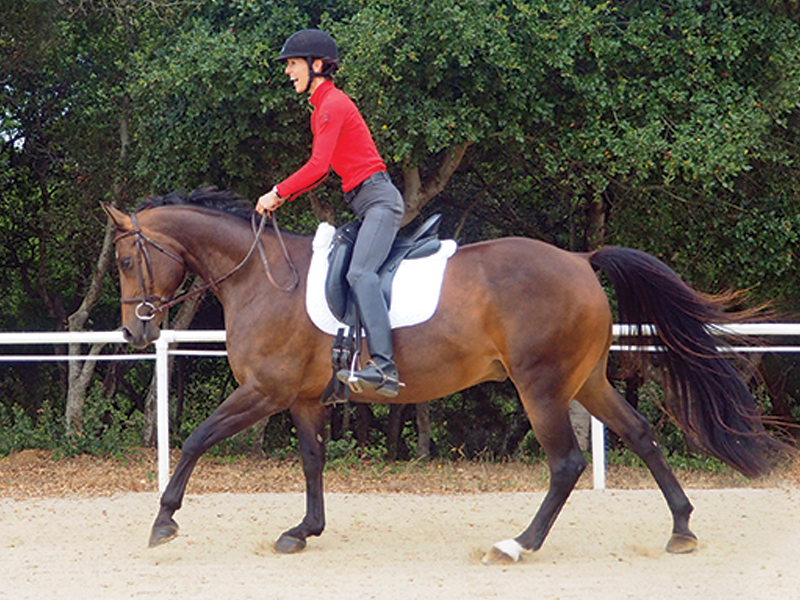
When cantering a young or unbalanced horse, help the horse relax by lifting your seat slightly out of the saddle to keep your weight off his back. Photo courtesy of Jec Ballou
Once his balance and comfort improves on the good lead, he will be able and willing to try harder on the less balanced lead. Plus, you will have established clearer cues from your seat, which will now have more meaning to him when you tackle the difficult lead. Too many riders spoil a day’s potential progress by assuming they have to train both leads, and any improvements they might have made in rhythm, relaxation, and calmness fall apart.
Most horses will find their balance more quickly on a circle, which is why canter is usually introduced and schooled in the early stages on a circle. A word of caution, though: Do not get married to the circle. As soon as you can make a canter departure on the correct lead, and your horse is listening to you well, leave the circle and ride a straight line. You can always return to the circle if you need to test your steering or your horse’s attention. But make sure you do not just ride round and round the circle each time you canter.
A horse’s balance improves by organizing his body on curved lines, straight lines, and the transitions between them. If he does not negotiate these small challenges as soon as possible, his balance stagnates and riding straight lines becomes an insurmountable challenge. A horse that only canters round and round a circle will treat the straight line like a racetrack.
With these simple tips in mind, assess your current ratios of time spent cantering and the perceived effect on your horse. Remember to use the critical fitness tool of cantering in a consistent and measurable way each week. His well-oxygenated muscles and looser spine will be your reward.
Related: 9 Best Cavaletti Exercises
To read more of Jec Ballou's articles on this site, click here.
Main Photo: Shutterstock/Alexander Rochau



